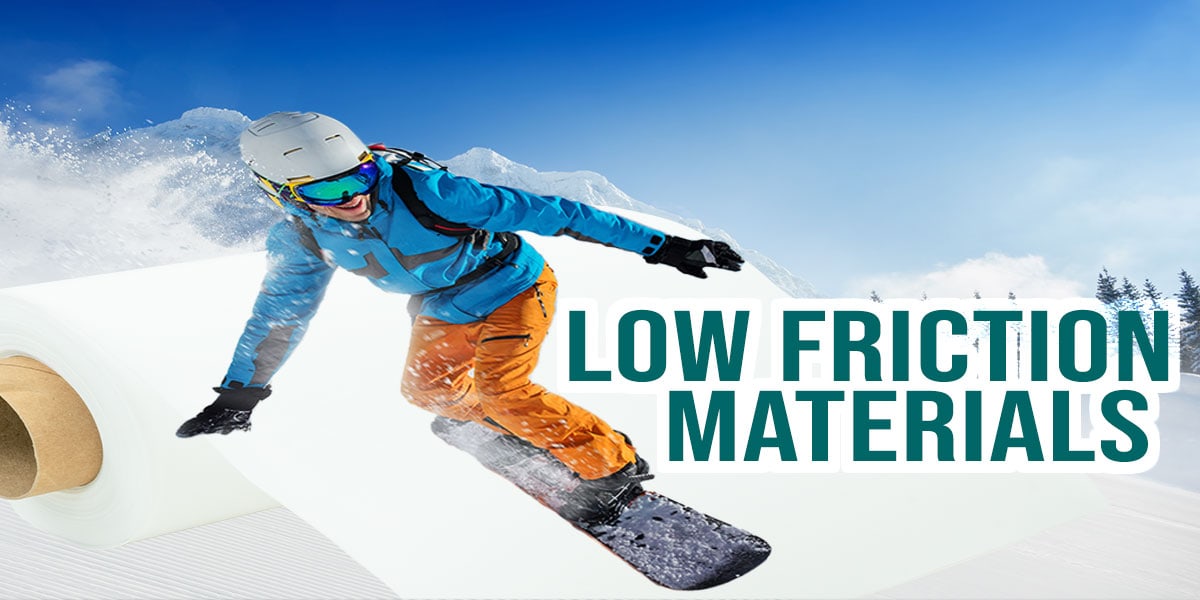How does coefficient of friction relate to materials?
Low friction materials are required in many applications to reduce friction, dampen noise, and provide abrasion and wear resistance. What is the definition of low friction? Considering materials, we correlate low friction to material surface energy or the coefficient of friction. For example, rubber and steel materials are considered to have a high coefficient of friction. When a rubber surface mates with a steel surface, it creates a suction-like reaction creating friction between the two surfaces. This is ideal if you don’t want the material to move, or if grip support was necessary for your application. More commonly if you want to reduce friction, lubrication is applied in the form of an aerosol or liquid coating like mechanical grease, oil, and release agents. Although these types of lubrication work, they may not be suited for all applications. Why? These types of methods can wear out and require reapplication, as well contaminating areas not intended for lubrication, or locations can be inaccessible for reapplication.
CS Hyde specializes in low friction adhesive tapes, polymer films, and PTFE fabrics. This guide explores different materials that may be an alternative solution to reduce friction, create lubrication, as well as impact or wear resistance. Common types of low friction plastics include UHMW, Acetal, Nylon, PEEK, Polyester, and PTFE made with Teflon™ Fluoroplastics.
Types of coefficient of friction:
Static coefficient of friction: The static coefficient of friction represents the initial force required for one surface to slide over another as a stationary object.
Dynamic friction coefficient: The dynamic or kinetic friction coefficient refers to the friction
force measured during movement.
| Highest abrasion and wear Resistance | |
Acetal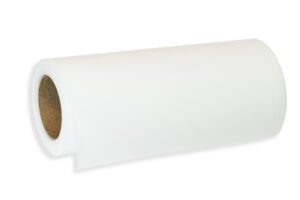 | Wear Resistance, High flexural fatigue strength, toughness, and creep resistance |
Delrin 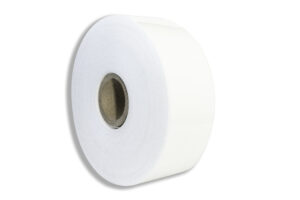 | Highly crystalline, strong, rigid, and possesses good moisture, temperature, and solvent resistance |
Nylon 6/6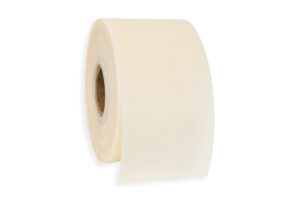 | High impact resistance Easy to fabricate Does not require lubrication |
PEEK 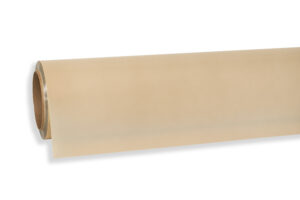 | Extremely high temperature resistance combined with excellent mechanical, electrical, and chemical resistance |
UHMW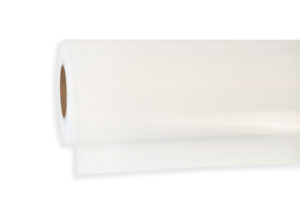 | High Abrasion Resistance (exceeding steel) Slippery like PTFE |
| Best Non-Stick Release Properties | |
PTFE  | Super Slippery Extremely Temperature/Chemical resistant |
Rulon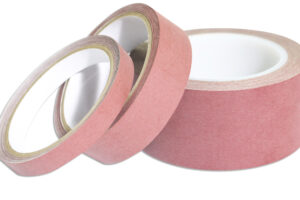 | Low coefficient of friction Excellent abrasion resistance Wide operating temp. range Chemical inertness |
PTFE Coated Fiberglass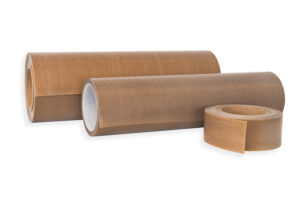 | Exceptional release properties, heat resistance, chemical resistance, moisuture resistance |
Types of low friction applications
Low friction is advantageous in a wide range of applications across various industries due to its ability to reduce wear, save energy, improve efficiency, and enhance performance. Here are some common low friction applications:
1. Bearings: Bearings are used in machinery to reduce friction between rotating parts. Low friction bearings ensure smooth movement and minimize energy loss while extending the lifespan of equipment.
2. Automotive: Low friction is crucial in automotive applications to improve fuel efficiency and reduce wear on engine components. This includes engine bearings, piston rings, and gearbox lubricants.
3. Aerospace: In aerospace, where every ounce counts, reducing friction is essential to improve fuel efficiency and extend the range of aircraft. Low friction coatings and lubricants are used on critical components like turbine blades and landing gear.
4. Medical Devices: In medical devices such as prosthetics and joint implants, low friction materials and coatings are used to minimize wear and friction between moving parts, providing better performance and longevity.
5. Sports Equipment: Sports equipment like bicycles, skis, and skateboards benefit from low friction materials and designs to maximize speed and performance. For example, low friction bearings in skateboard wheels reduce rolling resistance, allowing for faster rides.
6. Electronics: In electronics, low friction coatings are used to reduce wear and improve the reliability of moving parts such as connectors and switches. This helps to ensure smooth operation and longevity of electronic devices.
7. Textiles: Low friction coatings and finishes are applied to textiles to reduce friction between fibers, improving their durability, comfort, and performance in applications like sportswear and outdoor gear.
8. Marine Industry: In marine applications, low friction coatings are used on ship hulls and propellers to reduce drag and improve fuel efficiency. This helps ships move through water more efficiently, reducing fuel consumption and emissions.
9. Robotics: Low friction materials are essential in robotics to reduce wear and energy consumption in moving parts, enabling smoother and more precise movements.
10. Consumer Products: Many consumer products benefit from low friction materials and coatings, including household appliances, furniture, and toys. For example, non-stick cookware utilizes low friction coatings to prevent food from sticking and ease cleaning.
These examples highlight the diverse range of applications where low friction technology plays a crucial role in improving performance, efficiency, and durability.
Material Selection Guide
| Low Friction Plastics | Low Friction Tapes | Low Friction Fabrics |
|---|---|---|
| Acetal | PTFE Tape | PTFE Coated Fiberglass: • Standard Grade • Ultra-Premium • Mechanical • Tear & Crease • Anti-Static |
| Delrin | UHMW Tape | PTFE Coated Kevlar |
| Nylon 6/6 | Nylon 6/6 Tape | |
| Mylar | Delrin Tape | |
| PEEK | Rulon Tape | |
| PTFE | PTFE Coated Fiberglass Tape | |
| UHMW | ||

